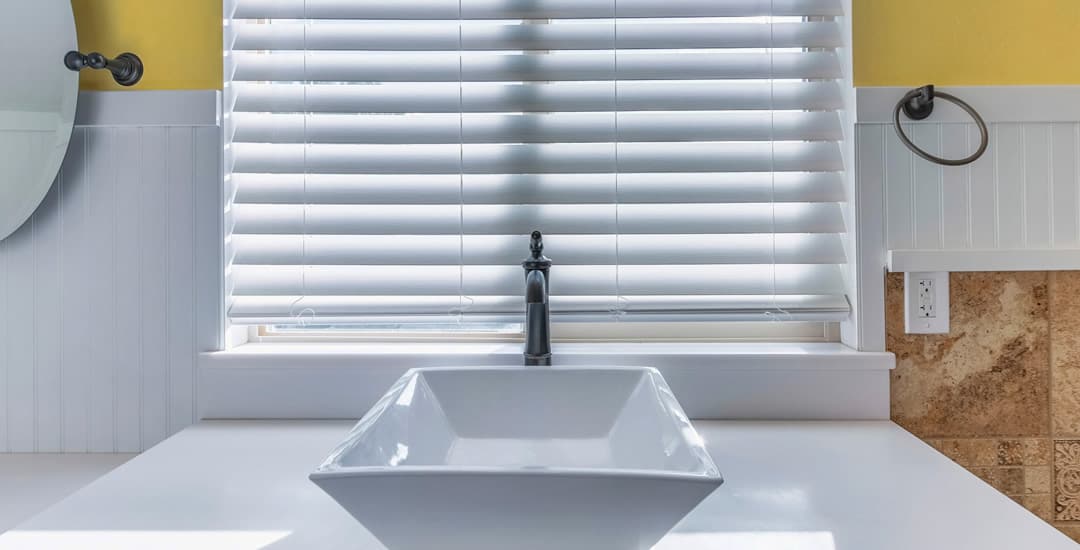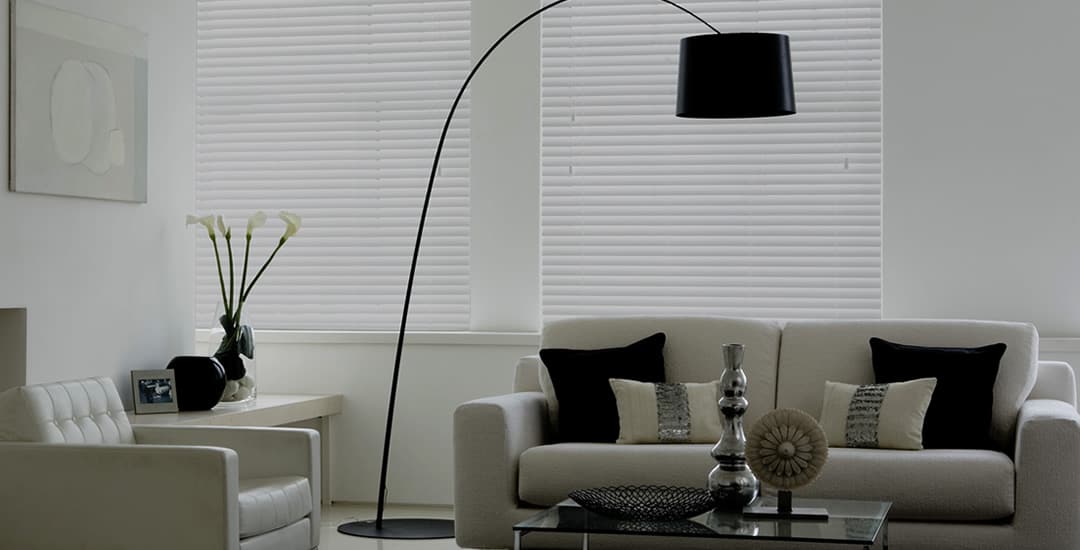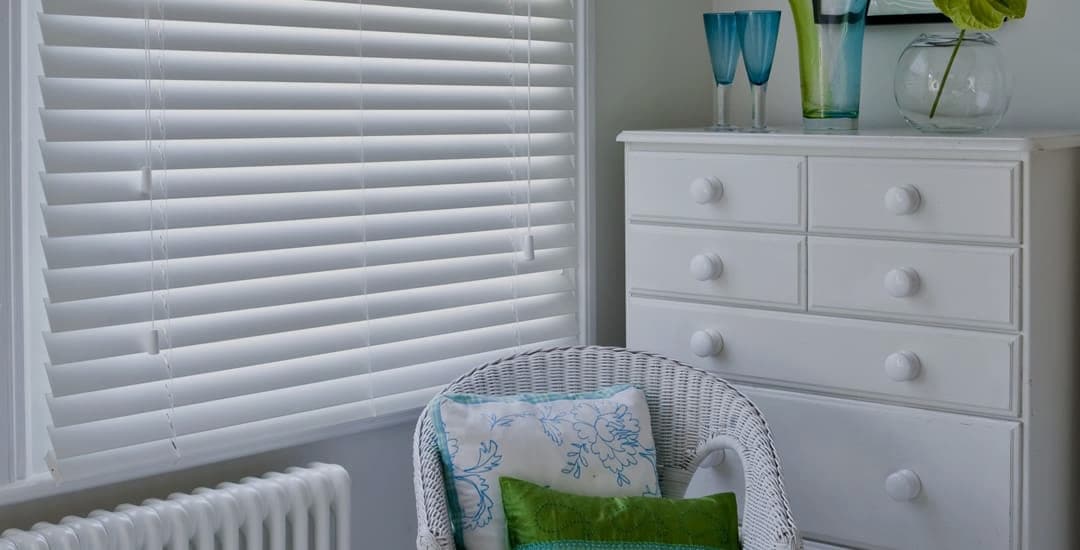
Yes, white faux-wood blinds block out light, and assuming that the blind is closed with the slats aligned snugly together, they will form a solid barrier than nobody can see through.
White faux-wood blinds are not technically blackout blinds, however; this isn’t because somehow their colouring or the material used to make them is light-permeable but rather, due to the design of the blind and potentially, how it is hung.
This blog post will tell you everything you need to know about white faux-wood blinds, how much light they block, and why.
Do white faux-wood blinds block out light at night?

Yes, if your blinds are fully closed and the slats aligned, white faux-wood blinds will block almost all external light, notwithstanding any light leakage around the edges of the blind due to how it is hung.
White faux-wood blinds are made of thick, rigid PVC, and this material is totally impermeable to light, which may not always be the case for all fabric blinds in white made of thinner materials.
No light can pass through the material of the blind’s slats itself; but as a white faux-wood blind is a slatted blind, a little light passes through the spaces between the slats, even when they’re lying totally flush.
You also get a small amount of light leakage through the tiny holes in the slats that allow for the lift cords. Generally, it would have to be fairly bright outside for you to notice this sort of light leakage from a white faux-wood blind; and this tends to appear as simply a muted area slightly lighter/less dim than the rest of the room in the area immediately around the blind.
This is generally such a negligible amount of light that it is very unlikely to disturb anyone who is sleeping, and may even be advantageous, as glancing towards the window and assessing if a little light is glowing around it can help you to orient yourself as to whether it is morning or still night-time when you wake up.
However, whilst a white faux-wood blind permits a little light to pass through it, it is fully impenetrable to spectators from outside, and however close someone might get to your window and however wildly they contort themselves, they will not be able to see anything at all of what is happening inside.
Do white faux-wood blinds block out light leakage from inside the home?
Not entirely, no. If you were standing outside, you would be able to see a dim glow of light around a white faux-wood blind when it is dark out and a light is on inside.
The only scenarios in which this is likely to be relevant or useful information is if you’re trying to negate any light leakage from your home into your garden in order to attract nocturnal wildlife, or if you don’t want anyone outside to be able to tell if you have lights on inside and so, whether you’re potentially in or out.
I can relate to this one, I’m not a fan of uninvited guests and am all for plausible deniability.
Do white wooden blinds keep light out 100%?

No, a white faux-wood blind doesn’t block 100% of light and cannot be considered to be a blackout blind, because of the small amount of light that passes between the slats and the lift cord holes.
Can you see through white blinds at night?
When it comes to white faux-wood blinds, nobody can see through these at night in either direction when the blind is closed. However, a thin fabric blind in any colour but particularly white or a light colour might be sheer enough to let passers-by see shapes or movements behind the blind; this very much depends on the blind and its material, rather than its colour.
A lot of people labour under the misapprehension that white blinds or blinds in lighter colours in general are apt to let more light in than darker blinds; this isn’t the case and in fact, the blackout linings of most fabric blinds are actually white in colour, not black like many folk assume; and white actually reflects light more effectively than any other colour.
It is entirely possible to have white blinds that are not at all see through and for some types of blinds, that also achieve a full blackout effect. When it comes to white faux-wood blinds, they easily achieve the former but not quite the latter!




